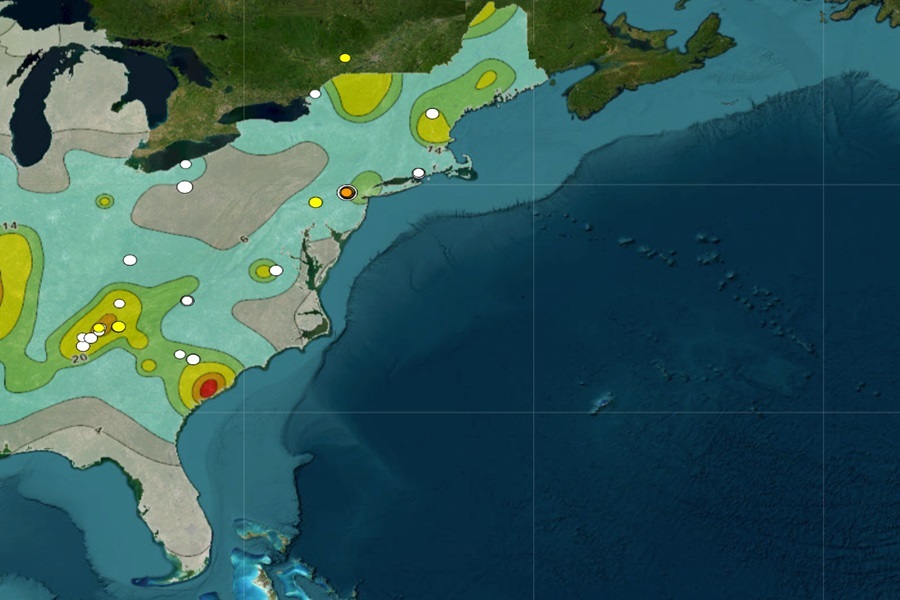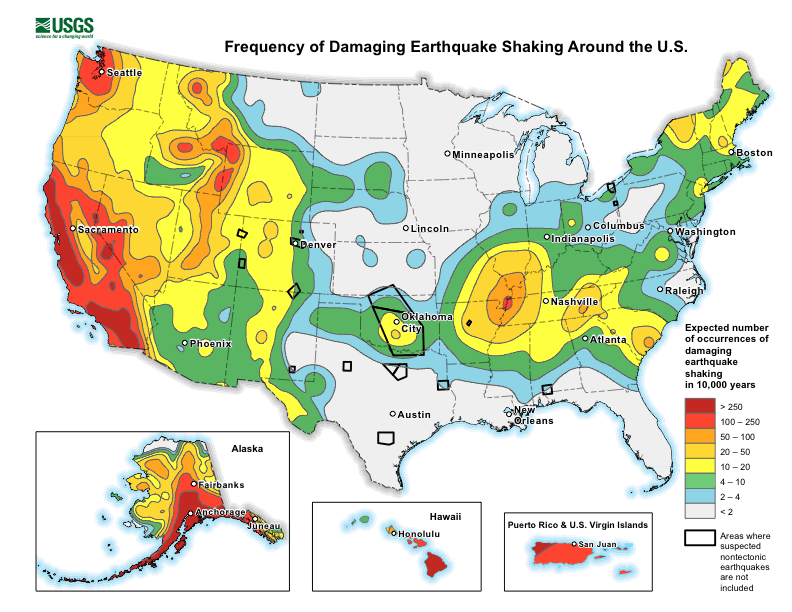
While the western United States is better known for its active seismicity, the eastern United States has been quite rattled in recent weeks; according to USGS, there have been 141 earthquakes in the eastern United States in the last 30 days.
Most of the earthquakes in the last 30 days have struck in New Jersey where a sequence began there on the morning of April 5 when a magnitude 4.8 event struck. Beyond the magnitude 4.8 earthquake, there were moderate aftershocks too. According to USGS, 3.7 magnitude event struck near Bedminster just before 6 pm on April 5, with 10 other earthquakes measuring as a 2.0 or greater magnitude event. According to the Northeast States Emergency Consortium, on average there are about 2-3 earthquakes in New Jersey in a year, but according to USGS, New Jersey has now experienced 50x that threshold in just the last 3 weeks.
The next most popular area for earthquakes over the last month have been in the southern Appalachians, in the hills north of Atlanta, Georgia to the mountainous terrain of central and eastern Tennessee between Chattanooga and Asheville.

While the earthquakes in Tennessee are in an area more likely to see frequent damaging earthquake shaking, the same isn’t true for the other earthquakes that have popped up across the eastern United States in recent weeks.
According to USGS, a magnitude 2.4 earthquake struck outside of Reading, Pennsylvania yesterday afternoon. While no damage or injuries have been reported, more than two dozen people used the “Did you feel it?” reporting tool on the USGS website to report they felt shaking from this earthquake. USGS says the earthquake struck in an area known as the Lancaster seismic zone.
Since colonial times, people in the Lancaster seismic zone of southeastern Pennsylvania have felt small earthquakes and suffered damage from larger ones. “Earthquakes are felt once or twice per decade, with some decades having none and the 1990s having as many as six,” USGS wrote in an update on the earthquake. The Lancaster Seismic Zone is the most active seismic zone in the Commonwealth of Pennsylvania. This seismic zone has produced a number of moderate earthquakes in the past and has been routinely active over at least the last 200 years.
But according to the USGS, the Lancaster Seismic Zone isn’t considered to be in an area of elevated frequent damaging earthquake events. The same is true for earthquakes which struck in northeastern Ohio and northern Kentucky; those earthquakes occurred in low-earthquake regions of the U.S.
While the number of earthquakes seem high in the eastern United States, they aren’t that high when compared to the western United States. Including seismic events which struck nearby on the Mexican side of the U.S./Mexico border, there have been more than 4,500 earthquakes in the western United States west of Texas and Oklahoma in the last 30 days, with most impacting California. Hawaii has also been seismically active in the last 30 days, with USGS reporting 596 earthquakes all on or around the Big Island of Hawaii. Alaska has also seen more than 2,500 over the last 30 days, although most hit around unpopulated islands in the Aleutians.